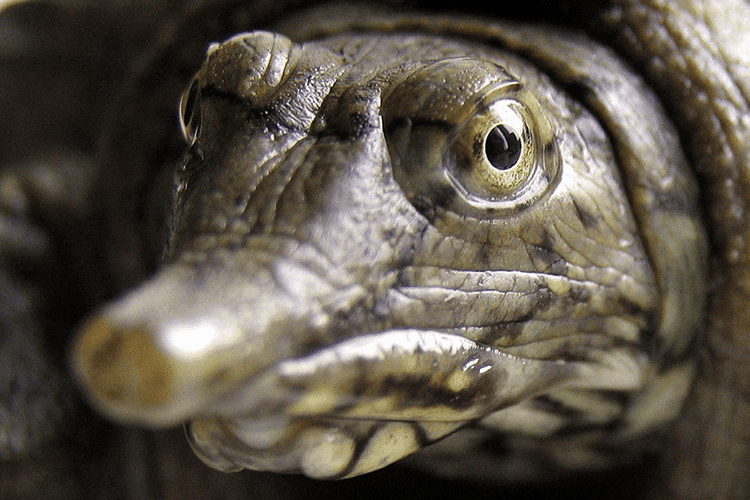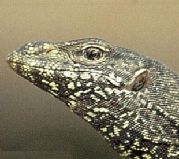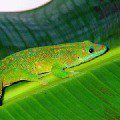
Trionyx
Trionix is an olive turtle with an unusual appearance, a funny proboscis and a soft shell. Despite her friendly appearance, she is distinguished by her obstinate character and is kept without sharing her neighbors. Trionics spend almost all the time in water. These turtles are omnivorous and picky in feeding.
Trionix (or Far Eastern tortoise) is a fairly popular exotic pet, one of the most famous soft-bodied tortoises, quite unpretentious in content, but suitable only for experienced owners.
The main advantage of Trionics is its unusual appearance. A medium-sized turtle has a head with a long, funny proboscis, the end of which resembles a piglet, plump lips, a soft, almost perfectly round shell, covered with skin and not having horny plates, like most turtles, massive paws with five fingers, three of which end in large claws (inner fingers), etc. The carapace is very smooth, mostly gray-greenish or yellowish in color, the plastron can be light yellow or pinkish-white, the limbs, neck and head are olive or brown. A smooth shell, devoid of horny shields and large tubercles, allows Trionyxes to easily dig into the silt in their natural habitat.
Turtles grow on average up to 25 cm (along the length of the carapace), but often significantly exceed this threshold (up to 40 cm).
Trionics are often aggressive. Their powerful jaws can cause serious injury to an opponent, so you need to be very careful when handling these turtles.
Trionics is not a contact turtle. She spends almost all the time in the water and is very worried when she is picked up. Trionix’s shell is quite soft and easy to injure, and therefore you need to interact with your pet very carefully.
Trionics are excellent swimmers. Their smooth, but fast movements can be admired endlessly.

The life expectancy of Trionics in captivity, with proper maintenance, is on average 25 years.
Trionics spend most of their time in the water and are excellent swimmers. To keep them, you will need a spacious, large aquarium, at least 200 liters for one adult. The comfortable water temperature for Trionix is + 24-29? C, you need to regularly monitor the temperature so as not to go beyond the optimal range.
Trionics have a great appetite, so the water in the aquarium gets dirty pretty quickly. This means you need a powerful filter.
Despite the fact that most of the time the turtle spends in the water, it will also need an island of land with a gentle shore, on which it will dry. Traditionally, a UF lamp and a heating lamp are installed above the shore. Light and heat are necessary for the turtle to better absorb calcium and vitamins. However, it is very important to set the lamp at a safe distance for the turtle: if the lamp is set too low, the pet will get a serious burn!
The air temperature on land should be higher than the water temperature, but not more than 32?
Trionics are omnivores. In nature, their main diet is fish, insects, larvae, amphibians. Under home conditions, Trionics are fed with ready-made food for turtles, bloodworms, larvae, etc. These pets are very voracious, but in no case should you overfeed them.
The Chinese Trionics is a solitary animal. In no case should you put any neighbors in his aquarium. Trionyx has a rather aggressive nature, weaker pets are highly likely to go to him for food, and stronger animals, on the contrary, can inflict life-threatening injuries on a turtle with a sensitive shell.
When getting a Trionix, you should understand that this is not a contact pet and not a pet for play. The turtle should only be handled for general health checks and protective gloves should be worn. Trionics is very nervous when he is picked up, diligently tries to bite the “offender” and, thanks to his long flexible neck, he almost always succeeds. These turtles bite quite strongly, you need to be very careful when handling them.
Chinese trionyxes are fairly common turtles. From can be found in Japan, Korea, China, on the island of Taiwan, as well as in the Far East of Russia, in the basin of the Amur and Ussuri rivers.
Trionyxes have a soft, smooth, rounded shell, thanks to which the turtles easily burrow into the mud.
Trionics burrow into the sand for camouflage.
Thanks to powerful bone plates in their mouths, Far Eastern tortoises can easily bite through snail shells.





